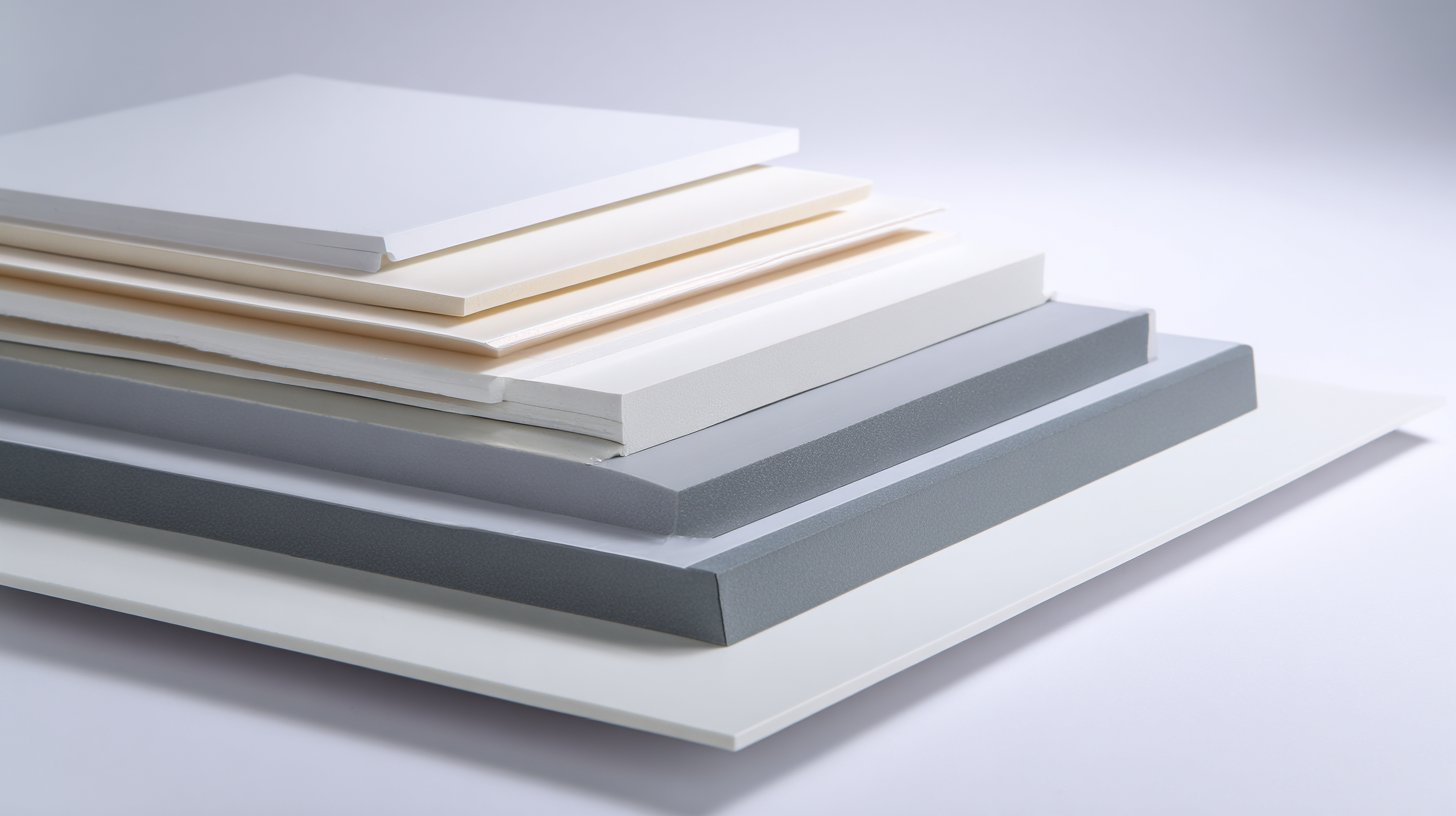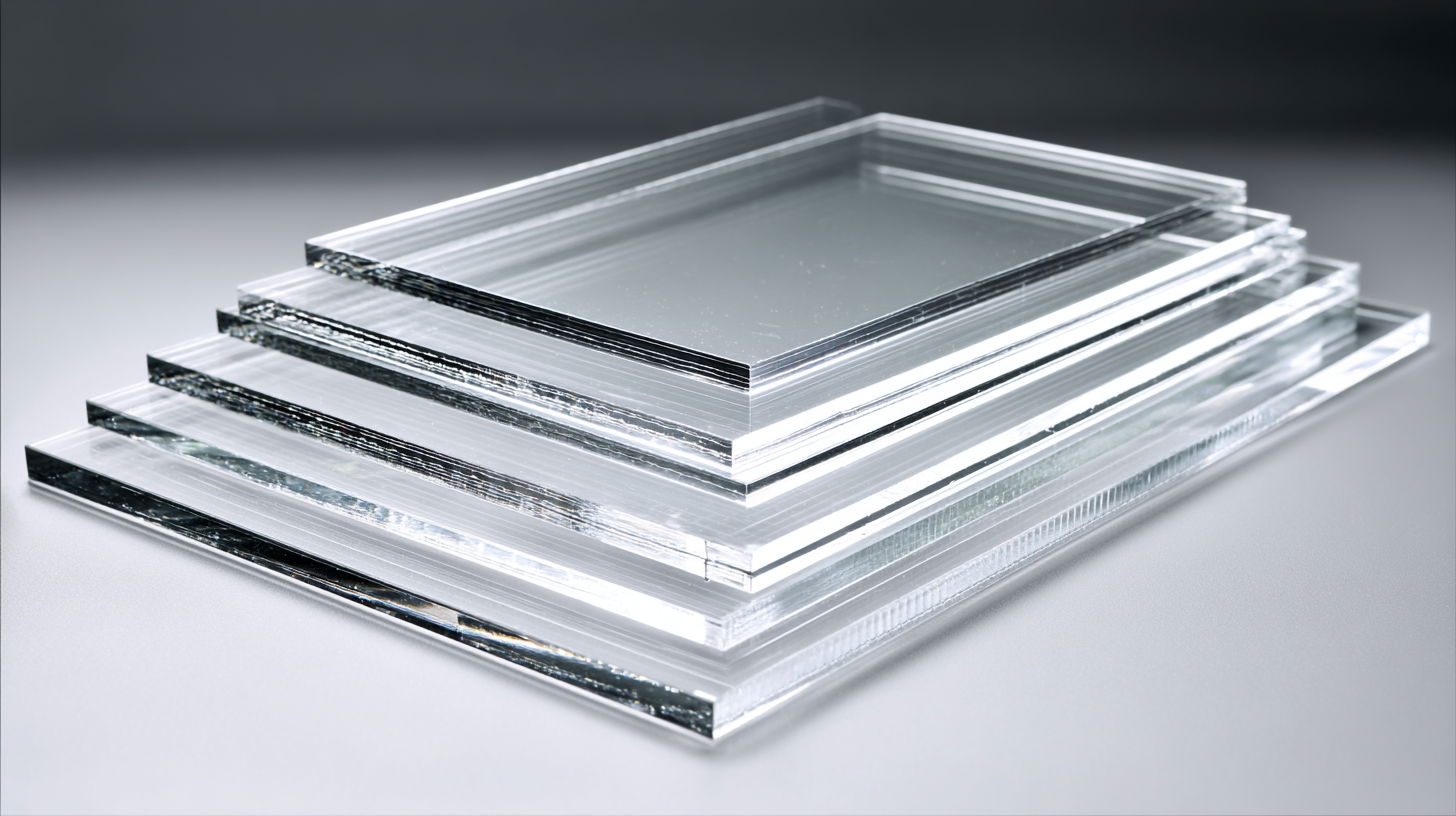The Future of Vacuum Forming Sheets Shaping Industries Worldwide
In an era where efficiency and precision are paramount, vacuum forming sheets are emerging as a transformative force in various industries, from automotive to packaging. As the global demand for high-quality materials continues to rise, the reliance on these expertly manufactured sheets has increased significantly. With Chinese manufacturers at the forefront, renowned for their unwavering commitment to quality, vacuum forming sheets are proving to be essential in shaping products that meet rigorous standards and consumer expectations. This blog explores the innovations and advancements in vacuum forming technology, highlighting its pivotal role in driving modernization and sustainability. As we delve into the future of vacuum forming sheets, we will uncover how these versatile materials are not only redefining production processes but also enhancing the overall quality and performance of countless applications worldwide.

The Growth Trajectory of the Global Vacuum Forming Market by 2025
The vacuum forming market is poised for significant growth, with projections estimating a compound annual growth rate (CAGR) of approximately 6% from 2020 to 2025. This surge can be attributed to various factors, including the rising demand for custom packaging solutions across diverse industries such as automotive, consumer goods, and healthcare. According to a recent market research report by Grand View Research, the global vacuum forming market is expected to reach USD 4.5 billion by 2025, underscoring its pivotal role in modern manufacturing processes.

One of the key drivers of this growth is innovation in materials and technologies. As industries increasingly prioritize sustainability, bio-based and recyclable materials are becoming essential in vacuum forming applications. Additionally, advancements in 3D printing and computer-aided design (CAD) are facilitating faster prototyping and production cycles, making vacuum forming an attractive option for manufacturers seeking flexibility and efficiency. As companies adapt to new consumer preferences and environmental responsibilities, the vacuum forming market is set to evolve, offering tailored solutions that align with industry needs.
Emergence of Innovative Materials in Vacuum Forming Applications
The rise of innovative materials is significantly reshaping the landscape of vacuum forming applications, presenting exciting possibilities for various industries. Among these advancements, natural plant fiber-based materials are gaining traction as eco-friendly alternatives to conventional plastics. Their lightweight properties and biodegradability not only meet the growing demand for sustainable packaging solutions but also align with global efforts to reduce plastic waste. Innovations in 3D molded cellulose are further enhancing these materials' applications, offering a versatile option for creating intricate designs and structures.
Tip: When exploring new materials, consider their lifecycle and environmental impact. Opting for sustainable materials, such as those derived from natural fibers, can not only enhance your product's appeal but also contribute to a greener planet.
Moreover, the incorporation of lightweight composites into vacuum forming processes is transforming product design. These materials enhance performance while reducing weight, making them ideal for industries such as automotive and aerospace. With continuous advancements in manufacturing technologies, the future of vacuum forming sheets looks promising, as industries increasingly prioritize efficiency and sustainability.
Tip: Stay updated on the latest material innovations. Engaging with industry trends can help you identify new opportunities and technologies that can improve your products and processes.
Impact of Industry 4.0 on Vacuum Forming Processes and Efficiency
The advent of Industry 4.0 has revolutionized manufacturing processes across various sectors, and vacuum forming is no exception. By integrating advanced technologies such as the Internet of Things (IoT), artificial intelligence (AI), and robotics, companies are streamlining their vacuum forming processes to achieve unprecedented efficiency. Real-time data collection and analytics allow manufacturers to monitor production lines, minimize downtime, and optimize material usage, significantly reducing waste and costs.
Moreover, automation in vacuum forming processes has led to enhanced precision and consistency, ensuring that products meet stringent quality standards. With AI-driven systems, manufacturers can predict machinery failures before they occur, allowing for proactive maintenance and reduced disruption. Additionally, smart factories can adapt production runs based on real-time demand, facilitating a more responsive and flexible manufacturing environment. As industries pivot toward smarter solutions, the impact of Industry 4.0 on vacuum forming is set to shape the future of production, driving innovation and sustainability in a rapidly evolving market.
The Future of Vacuum Forming Sheets Shaping Industries Worldwide
| Industry | Use of Vacuum Forming | Impact of Industry 4.0 | Efficiency Improvement (%) |
|---|---|---|---|
| Automotive | Interior trims, dashboards | Increased automation and real-time monitoring | 20% |
| Consumer Electronics | Casing and bezels | Streamlined production with IoT integration | 15% |
| Packaging | Custom trays and blisters | Enhanced design capabilities using AI | 25% |
| Medical Devices | Covers and trays for instruments | Precision manufacturing with smart sensors | 30% |
| Aerospace | Custom interiors and components | Advanced materials and lightweight design | 18% |
Sustainability Trends in Vacuum Forming: Meeting Evolving Consumer Demands
As the demand for sustainable practices grows, the vacuum forming industry is adapting to meet new consumer expectations. With a heightened awareness of environmental impact, manufacturers are now focusing on sourcing eco-friendly materials for their vacuum forming sheets. This shift not only aligns with global sustainability goals but also appeals to environmentally conscious consumers who prioritize products made from recyclable and biodegradable materials.

Furthermore, innovative technologies are emerging within the vacuum forming process itself, enabling more efficient production methods that reduce waste and energy consumption. Companies are investing in advanced machinery that minimizes the use of plastic while maximizing the functionality of the final product. By integrating sustainable practices at every level of production, industries can effectively address evolving consumer demands while contributing positively to the environment. This commitment to sustainability signals a transformative phase in vacuum forming, indicating that the industry is not only responsive to market trends but also proactive in its efforts to foster a greener future.
Key Industries Driving the Adoption of Vacuum Forming Techniques Worldwide
The adoption of vacuum forming techniques is significantly reshaping numerous industries around the globe. According to a recent report by Research and Markets, the vacuum forming market is expected to reach USD 3.4 billion by 2026, growing at a CAGR of 5.7% from 2021. This growth is primarily driven by the packaging, automotive, and consumer goods sectors, which are increasingly leveraging the advantages of vacuum-formed materials for their products.
In the automotive industry, vacuum forming is utilized to produce lightweight yet durable components that enhance fuel efficiency and performance. The Global Automotive Plastics Market report indicates that vacuum-formed plastics are critical in the production of interior and exterior parts, expected to reach a market value of approximately USD 24.7 billion by 2025. Similarly, the packaging industry has recognized the benefits of vacuum forming in creating custom solutions that reduce material waste while maintaining product integrity, with a projected growth rate of 4.8% annually through to 2024, as highlighted by a study from Smithers Pira. These trends illustrate how vacuum forming techniques are not only optimizing manufacturing processes but also driving innovation across various sectors.
The Future of Vacuum Forming Sheets Shaping Industries Worldwide
This chart illustrates the expected growth of key industries adopting vacuum forming techniques worldwide over the next five years.